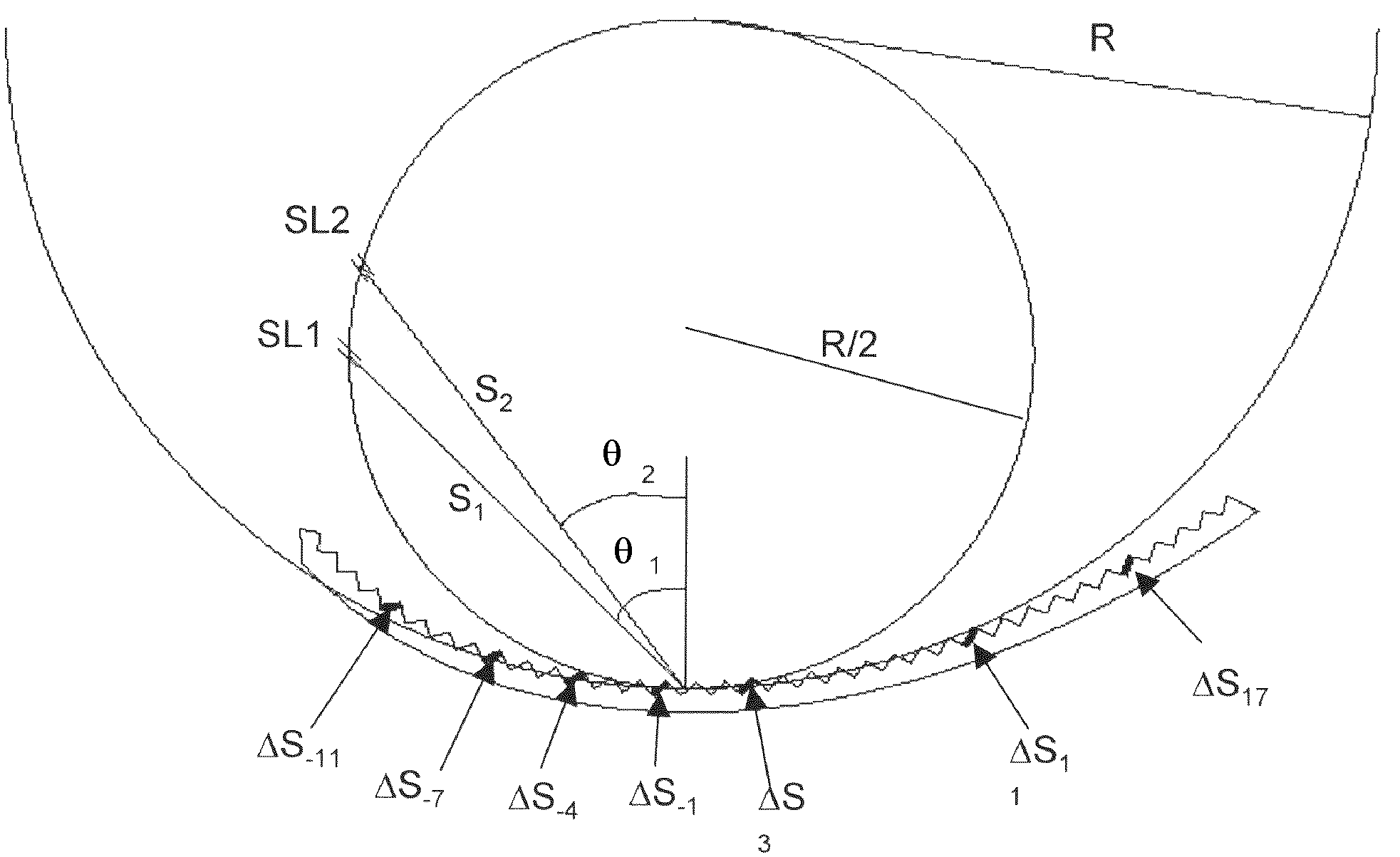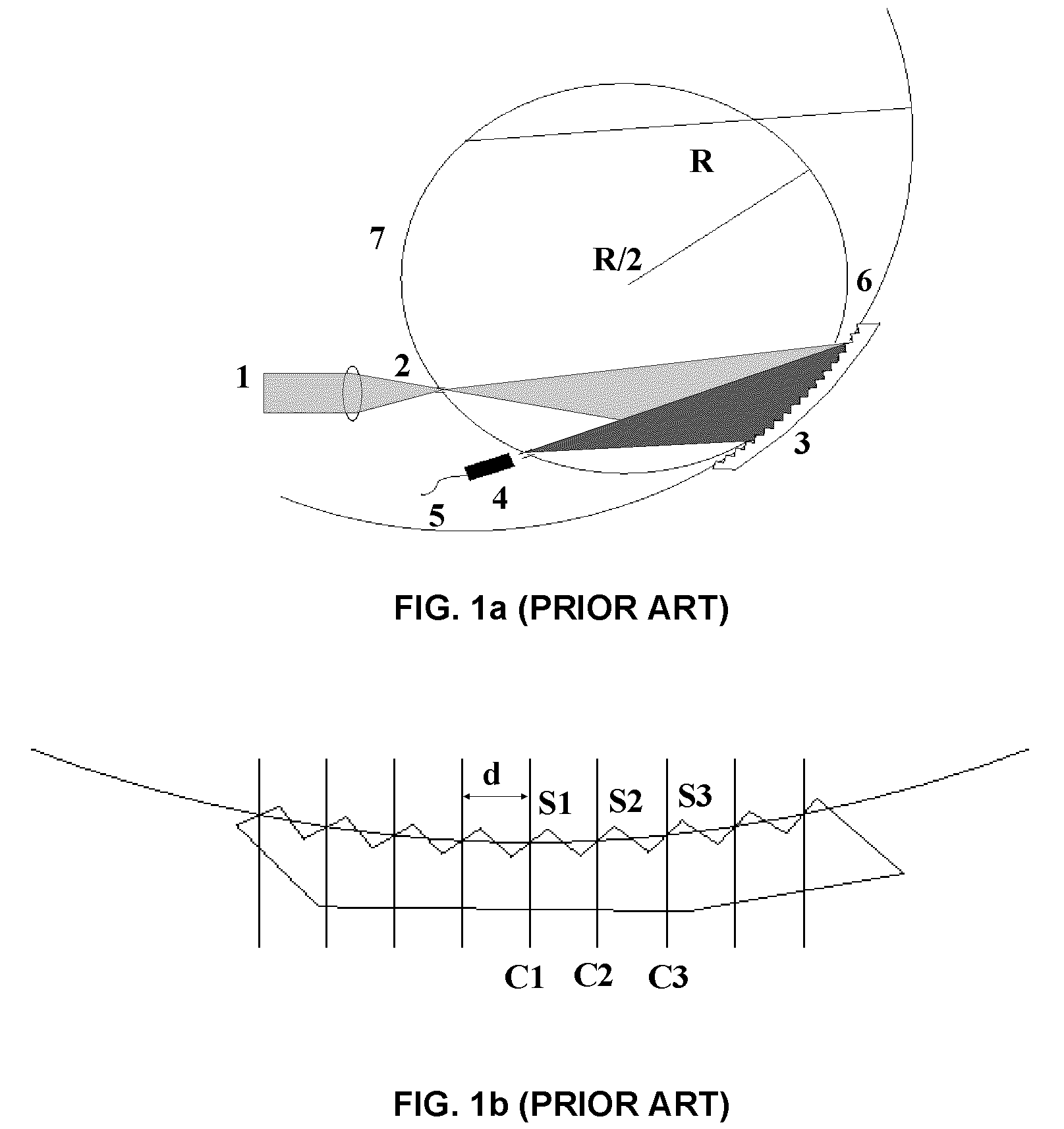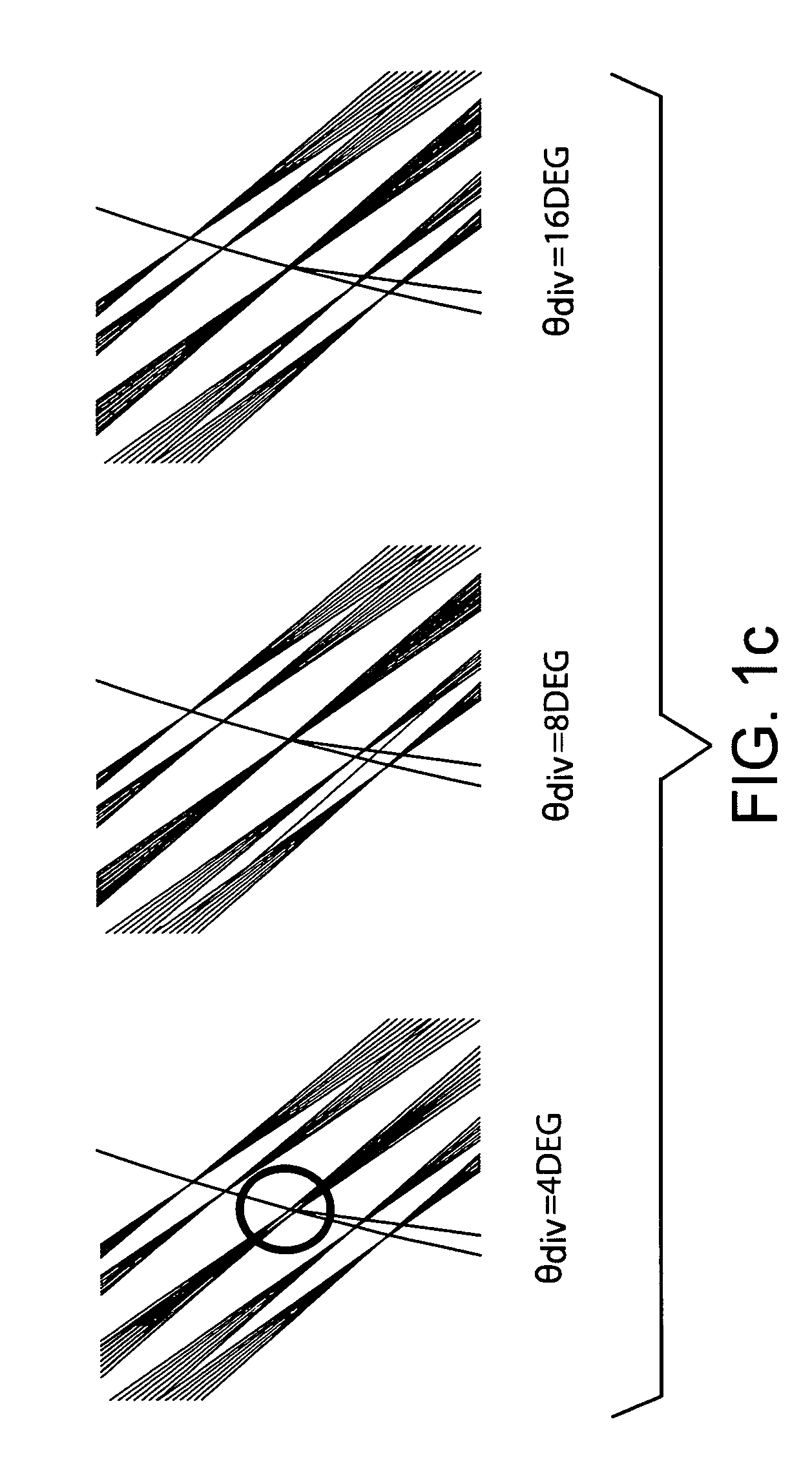Curved grating spectrometer with very high wavelength resolution
a spectrometer and curved grating technology, applied in the field of semiconductor photonic and optoelectronic devices, can solve the problems of limiting wavelength resolution, reducing the resolution of refocusing beams, and limiting wavelength resolution, so as to achieve small rs factors, and reduce the cost of production.
- Summary
- Abstract
- Description
- Claims
- Application Information
AI Technical Summary
Benefits of technology
Problems solved by technology
Method used
Image
Examples
Embodiment Construction
[0034]The present invention discloses a system comprising a compact curved grating (CCG), its associated compact curved grating spectrometer (CCGS) module and a method for making the same. The system is capable of achieving very small (resolution vs. size) RS factor. The uses of CCGS module include an isolated optical spectrometer using discrete optical components such as slits, grating, spectrometer casing, detector, detector array, and motor drive. More generally, the CCGS module could also be used as a wavelength dispersion element in a photonic integrated circuit. The photonic integrated circuit can be based on either of glass (silica) waveguide, semiconductor waveguide (including but not limited to, polymer waveguide, or any other type of optical waveguiding devices. Semiconductor waveguides include silicon or compound semiconductor waveguides such as III-V (GaAs, InP etc). The wavelength dispersion element based on the CCGS module in the photonic integrated circuit can be inte...
PUM
 Login to View More
Login to View More Abstract
Description
Claims
Application Information
 Login to View More
Login to View More - R&D
- Intellectual Property
- Life Sciences
- Materials
- Tech Scout
- Unparalleled Data Quality
- Higher Quality Content
- 60% Fewer Hallucinations
Browse by: Latest US Patents, China's latest patents, Technical Efficacy Thesaurus, Application Domain, Technology Topic, Popular Technical Reports.
© 2025 PatSnap. All rights reserved.Legal|Privacy policy|Modern Slavery Act Transparency Statement|Sitemap|About US| Contact US: help@patsnap.com



